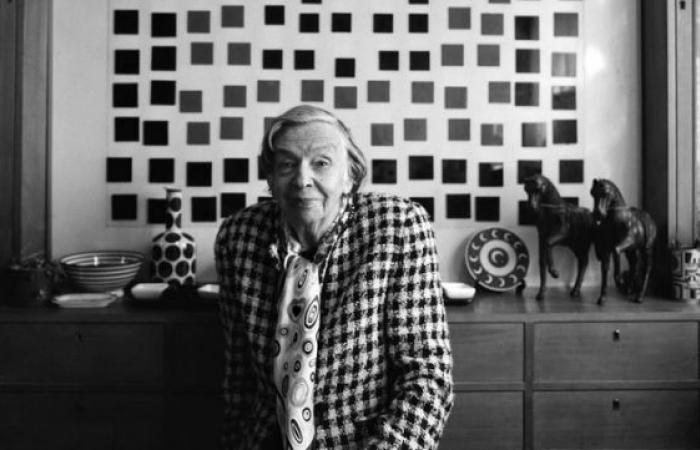Matilde Pérez Cerda was an influential Chilean painter, sculptor and visual artist, becoming a pioneer of kinetic art and op-art in Latin America. For this reason, in a new Unforgettable Women, The weekly special where we highlight the important feats of Chilean women in history and the present, we make visible the legacy of Matilde, who enriched the national artistic panorama and who, however, received late recognition.
Matilde’s interest in art manifested itself from an early age, entering the School of Fine Arts of the University of Chile in 1939, where she formally developed her vocation.
A little later, in 1944, Pérez studied mural painting and participated as an assistant in the ccreation of murals in the Ciudad del Niño in the commune of La Cisterna in Santiago. In 1948, she began working as a drawing teacher at the Dunalastair School and, in 1950, she co-founded an Academy of Plastic Arts in Providencia along with other teachers.
A year later she was appointed assistant to the Chair of Drawing and Painting at the School of Fine Arts of the University of Chile. Already in 1957, she took over as its interim full-time professor.
By 1960 Matilde Pérez was already a nationally recognized artist, with important awards and an extensive career as a teacher. That year, she received a scholarship from French Government to study in Paris, an experience that transformed her career and guided her towards kinetic art.
In this sense, Pérez stood out for his bold exploration of new visual languages and innovative use of materials. He integrated techniques that allowed him to explore optical, kinetic and tactile possibilities, using motors and electrical circuits. His works sought to create the illusion of movement and were deeply influenced by knowledge of the psychology of perception.
Her long career at the University of Chile led her to form the Kinetic Research Center of the School of Design of the Faculty of Architecture in 1975. However, that same year she was exonerated from her position by the dictatorship. Matilde continued teaching classes and training new generations of artists, serving as a professor of the Painting Course at the Providencia Cultural Institute in Santiago in 1984.
Some of his most emblematic works were the kinetic tunnel for the Chilean-North American Institute (1970) and the mural for the Apumanque shopping center (1982), a piece of welded steel with a light synchronization system that generated patterns of shape and movement. . This mural was moved to the Lircay campus of the University of Talca in 2007.
However, despite his talent and contributions to art, Matilde Pérez did not receive the recognition she deserved in Chile. According to specialists, this was because her work aligned with an artistic trend that was not valued in the country during her time. No won the National Art Prize, but received numerous international and local awards, such as the Silver medal at the Biennale Mondiale de Métiers d’Arts in Lyon (1979), the third Helian International Design Grand Prix in Montreux, Switzerland (1981 ), and the Municipal Art Prize of Chile (1997).
In fact, in 2012 a large-scale exhibition at the Telefónica Foundation titled “Matilde x Matilde”, in which more than 70 of her works were exhibited. This exhibition recognized her legacy and settled a debt that the art scene owed her and many other female creators who were marginalized for much of her life.
Matilde Pérez always remained focused on her creative work. “I work for anyone who wants to know me. Whoever doesn’t want to, he is fine. I have no responsibilities to anyone. “I have never worried if they recognize me in Chile,” stated that same year, when for the first time a large-scale exhibition was dedicated to him.
Matilde died on October 2, 2014 due to cardiorespiratory arrest. Her death marked the end of an era in kinetic art in Chile. Despite her lack of recognition for much of her life, her legacy endures and her work continues to be valued for her innovation and contribution to contemporary art.


